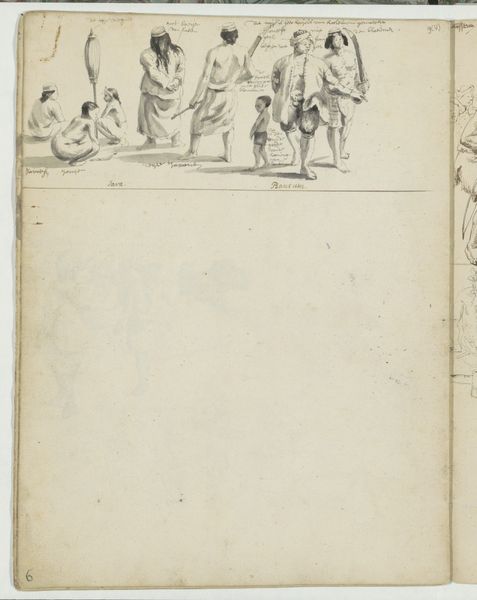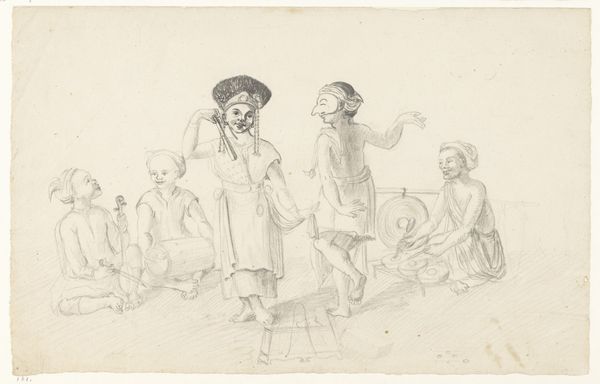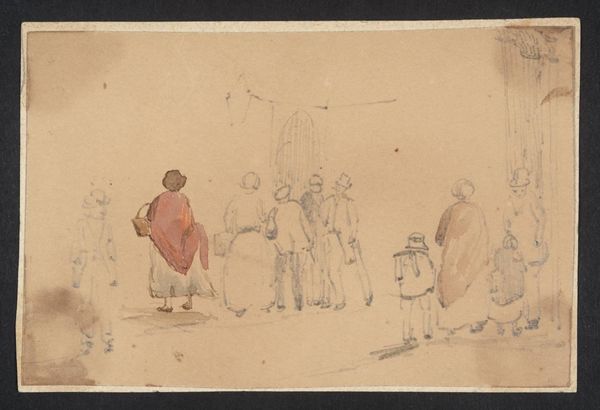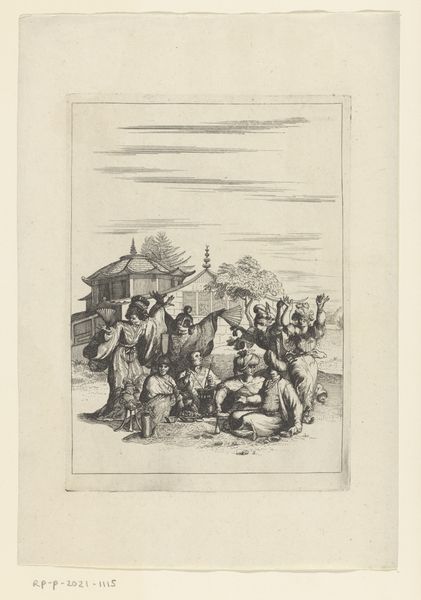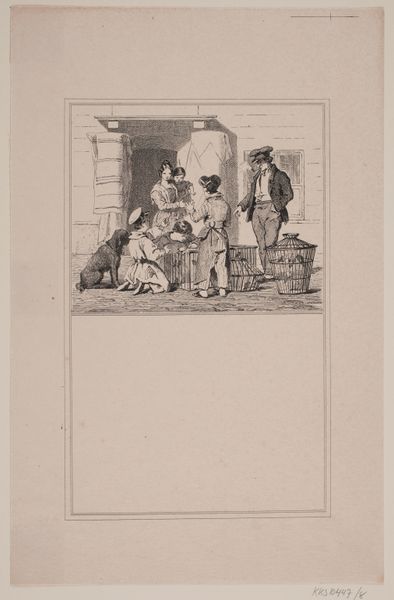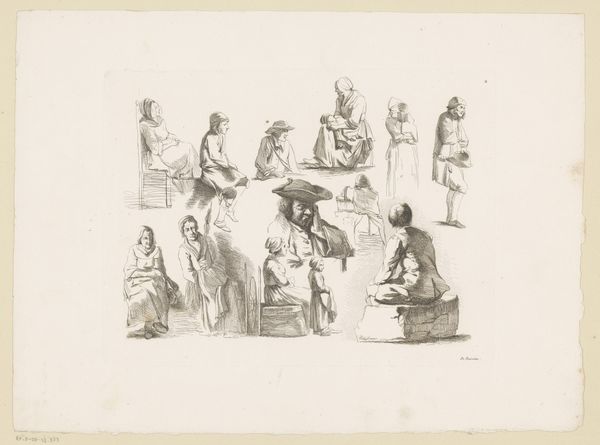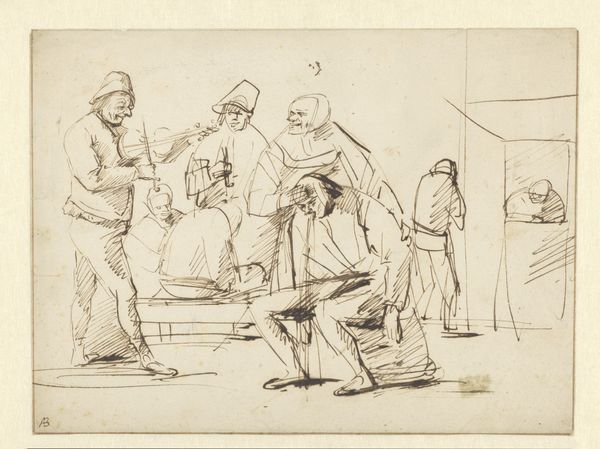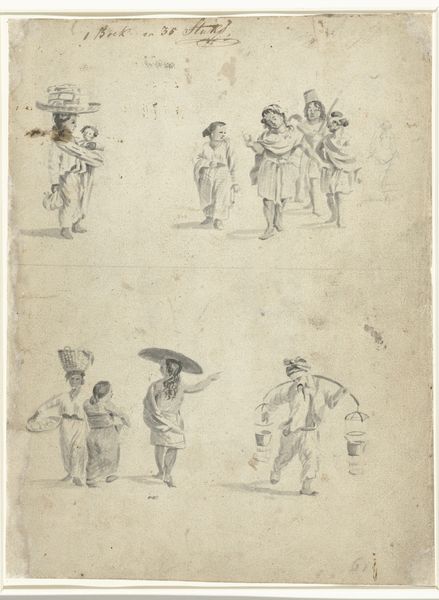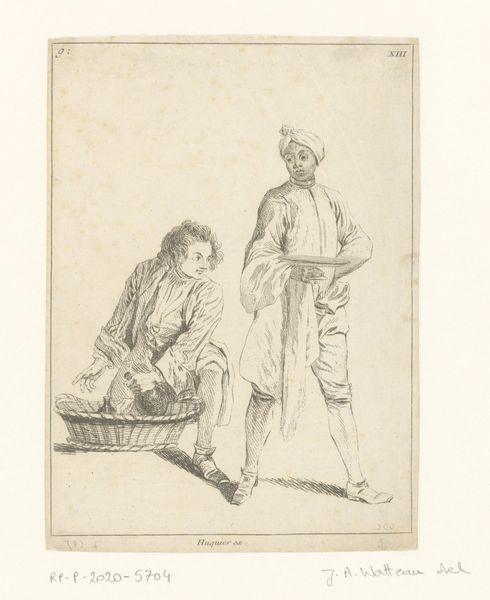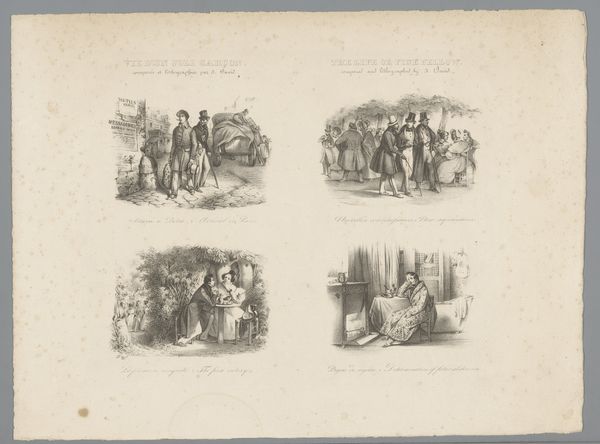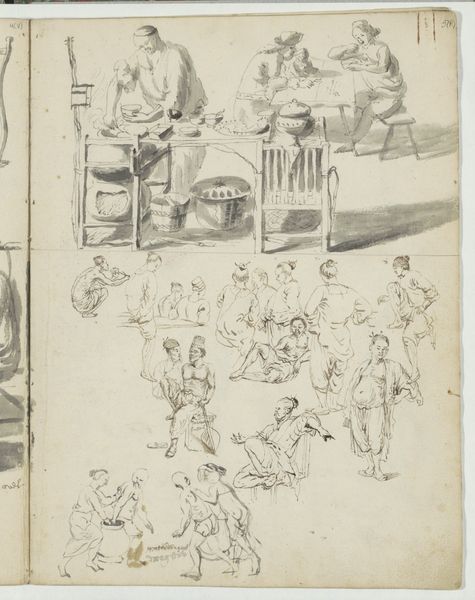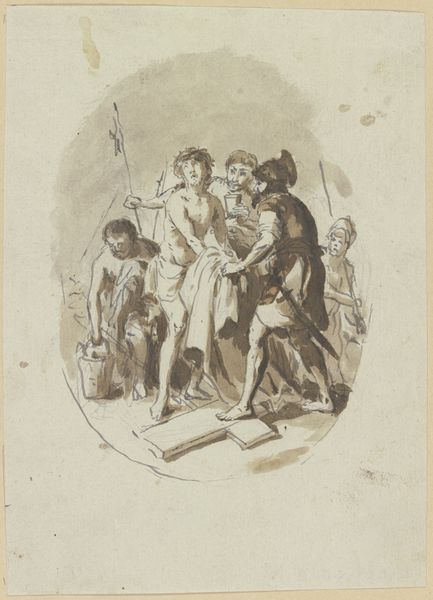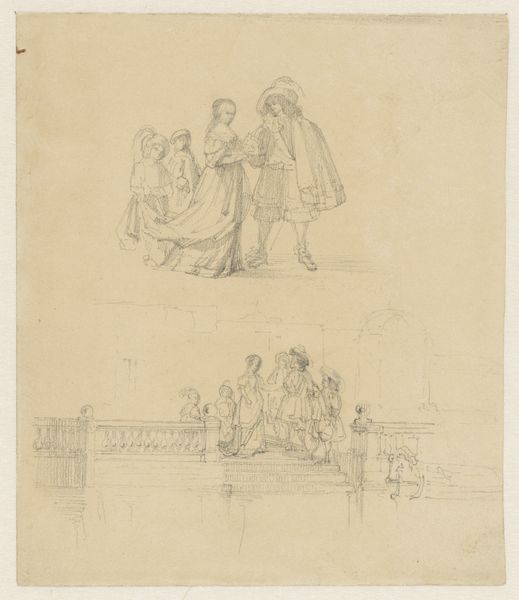
drawing, paper, pencil
#
drawing
#
asian-art
#
figuration
#
paper
#
pencil
#
genre-painting
Dimensions: height 295 mm, width 232 mm
Copyright: Rijks Museum: Open Domain
Curator: This is an interesting sheet of studies by Wouter Schouten, created around 1660. It is crafted using pencil on paper, and it features several vignettes of figures. What catches your eye first about it? Editor: Immediately, the sparseness of the drawing grabs me. It's primarily pencil on paper, the lines are incredibly delicate. The visible paper reminds me of raw material, and I wonder what kind of paper it is and its origin, given the probable context of Dutch trade with Asia at the time of its creation. Curator: Exactly. Schouten was a ship's surgeon for the Dutch East India Company, and the drawing contains scenes of daily life from his time abroad. It provides a glimpse into the Dutch presence in Asia, and reflects the cultural dynamics. It humanizes individuals through an outsider's artistic interpretation. Editor: Humanizes is one word. I am curious about the labour relations present in those "genre paintings." Is Schouten accurately portraying these people, or exoticizing the manual labor and activities that their lives would have demanded at that time and location? Look at that figure carrying baskets—we could spend a while analyzing those baskets. What were they used for? Where were they produced? Curator: It's certainly layered with socio-economic context. Schouten’s drawing has to be regarded as an artifact embedded in a larger system of power, and the act of recording is tied to Dutch economic and imperial ambition at that moment in history. We have a Western gaze capturing labor for audiences back home. Editor: Absolutely. It makes one consider the consumption habits of those viewing this art at the time. To truly dig into it, it'd be fascinating to delve into the social status of those people consuming this sort of imagery. These sheets of studies aren't detached observations. They’re embedded within specific networks of production and economic realities. Curator: Yes, and that relationship shapes our understanding of this drawing today, requiring a constant contextualization within systems of exchange and societal forces that shaped its creation and reception. Thanks for helping us explore this interesting artwork. Editor: Thank you. By addressing materiality and production alongside these socio-cultural questions, perhaps viewers are encouraged to consider the broader context in which it came to be.
Comments
No comments
Be the first to comment and join the conversation on the ultimate creative platform.
